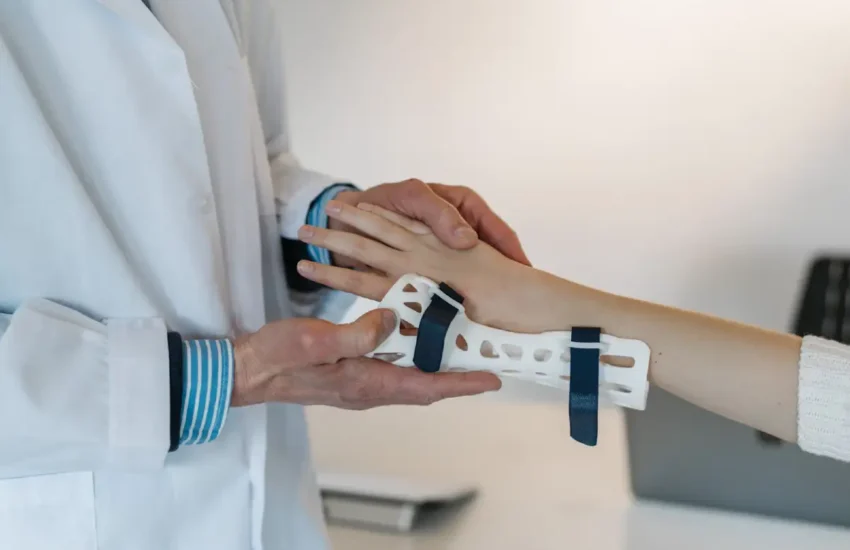Immediate Teeth Implants: Restoring Your Smile with Efficiency and Precision
In today’s article, we discover the benefits of immediate teeth implants. This is a cutting-edge dental solution for restoring missing teeth. Read on to learn about the procedure, advantages, and why it’s a convenient choice for regaining your smile. We will also explore how immediate implants can transform your oral health and confidence.
In our fast-paced world, efficient and precise solutions are sought after, even in dental health. This holds true when addressing missing teeth. Immediate teeth implants have emerged as an innovative and convenient option for efficiently restoring smiles. In this article, we will get into the process of immediate teeth implants, their advantages, and why they are increasingly favored as a swift and reliable solution to tooth loss.

Understanding Immediate Teeth Implants
Immediate teeth implants, also referred to as same-day dental implants or immediate-load implants, have revolutionized the field of dental restoration by providing patients with a swift and efficient solution for replacing missing teeth. This advanced procedure involves the placement of a dental implant post immediately after tooth extraction, followed by the attachment of a temporary crown or bridge on the same day.
The immediate restoration provided by these implants sets them apart from traditional implant procedures that require a healing period before placing the final prosthetic tooth. Find out the best option for you between dental bridge and dental implant on this link https://dentakay.com/dental-bridge-vs-dental-implant/
The Procedure
The process of immediate teeth implant placement is a remarkable dental procedure that allows individuals to restore their smiles and regain full oral functionality in a relatively short period. This comprehensive process begins with a thorough examination and evaluation by a skilled dental professional to determine the suitability of the patient for immediate implant placement.
During the initial assessment, the dentist examines the health of the surrounding teeth and evaluates the condition of the jawbone. This step is crucial as it ensures that the jawbone is strong and healthy enough to support the dental implant. To gain a precise understanding of the jawbone’s anatomy, advanced imaging technology, such as cone beam computed tomography (CBCT), is employed. CBCT provides detailed 3D images, enabling the dentist to accurately assess the bone density, volume, and structure, as well as identify the optimal placement for the implant.
Once the patient is deemed suitable for the procedure, the dental professional proceeds with the extraction of the damaged or decayed tooth. This step is necessary to create space for the implant. The extraction process is performed with utmost care to preserve the integrity of the surrounding tissues and minimize any trauma to the area.
After the tooth extraction, the immediate dental implant is carefully placed into the socket. The implant is typically made of biocompatible titanium, which allows it to integrate seamlessly with the jawbone over time. The dentist uses specialized instruments to insert the implant into the precise location determined during the pre-operative planning stage. The implant is positioned at a specific depth and angle to ensure optimal stability and support for the future replacement tooth.
The next crucial phase in the immediate teeth implant process is osseointegration. Once the implant is placed, the patient’s body begins its natural healing response. Over the course of several months, the jawbone’s cells interact with the implant’s surface, gradually forming a strong bond. This fusion between the implant and the bone is known as osseointegration, and it provides a stable foundation for the replacement tooth.
During the healing period, patients are typically provided with a temporary crown or bridge. The temporary restoration is designed to mimic the shape and color of a natural tooth, enabling patients to maintain their normal chewing and speaking abilities while the permanent crown or bridge is being fabricated. This temporary restoration is attached to the implant and provides functional and aesthetic benefits, allowing individuals to confidently go about their daily lives.
Once the osseointegration process is complete, the temporary restoration is replaced with a custom-designed permanent crown or bridge. The fabrication of the final restoration involves taking impressions of the implant and surrounding teeth to ensure a precise fit. Atherton implant bridges offer a reliable solution for replacing multiple missing teeth, securely anchored to dental implants for enhanced stability and a natural-looking smile
Once the osseointegration process is complete, the temporary restoration is replaced with a custom-designed permanent crown or bridge. The fabrication of the final restoration involves taking impressions of the implant and surrounding teeth, including what are dental alginate impressions, to ensure a precise fit. Skilled dental technicians craft the crown or bridge to match the color, shape, and size of the patient’s natural teeth, resulting in a seamless and natural-looking smile.
The placement of the permanent crown or bridge is a significant milestone in the immediate teeth implant process. The dental professional carefully attaches the final restoration to the implant, ensuring a secure and stable fit. The patient can now enjoy the benefits of a durable, functional, and aesthetically pleasing tooth replacement.
Benefits of Immediate Teeth Implants
- Time Efficiency
Immediate teeth implants save time by eliminating the need for extended healing periods and multiple dental visits. With traditional implant procedures, there is a waiting period of several months between implant placement and the attachment of the final restoration. Immediate implants streamline the process, allowing patients to receive a functional and aesthetically pleasing tooth replacement on the same day.
- Aesthetic Appeal
Immediate implants prevent patients from living with a gap in their smile during the healing process. The temporary crown or bridge offers an immediate cosmetic improvement, allowing individuals to regain their confidence and enjoy a beautiful smile from the beginning of their implant journey. This is particularly beneficial for individuals who value the appearance of their smile and want to avoid any prolonged period without a natural-looking tooth replacement.
- Functional Restoration
Immediate implants provide functional benefits by restoring proper chewing and speaking abilities right away. This allows patients to maintain their regular dietary habits and speak without hindrance, contributing to an improved quality of life. Unlike other tooth replacement options, immediate implants offer stability and durability, enabling patients to comfortably enjoy a varied diet without restrictions.
- Preservation of Jawbone
Immediate implants aid in preserving the structure of the jawbone and preventing bone loss. When a tooth is lost, the underlying jawbone can deteriorate over time due to the lack of stimulation. By placing the dental implant immediately after tooth extraction, the implant stimulates the bone, promoting healthy bone growth and stability. This helps to maintain the natural contours of the face and prevent the sunken appearance that can occur with bone loss.
- Long-Term Success
When performed by an experienced dental professional and with proper oral care, immediate teeth implants have a high success rate and can last for many years, providing a long-term solution to tooth loss. It is crucial to follow the dentist’s post-operative instructions, maintain good oral hygiene practices, and attend regular dental check-ups to ensure the longevity of the implants.
Considerations and Candidacy
While immediate teeth implants offer numerous advantages, not all individuals are suitable candidates for this procedure. Factors such as the quality and quantity of the jawbone, overall oral health, and the presence of underlying medical conditions can influence candidacy. A thorough evaluation by a dental professional is essential to determine if immediate implants are the right choice for an individual’s specific needs.
Additionally, it’s important to note that immediate implants may not be appropriate for certain cases, such as complex tooth extractions, severe gum disease, or the need for additional bone grafting procedures. In such situations, the dentist may recommend alternative treatment options or a staged approach to tooth replacement.
Conclusion
Immediate teeth implants offer a remarkable dental solution for efficiently and precisely restoring smiles. With the benefits of same-day functionality, aesthetic improvement, preservation of jawbone health, and long-term success, immediate implants have gained popularity as an effective alternative to traditional implant procedures.
If you are considering tooth replacement, consult with a qualified dental professional to determine if immediate teeth implants are the right choice for you. Experience the transformative power of immediate implants and regain your confidence with a beautiful and functional smile.


